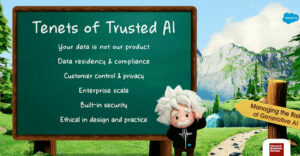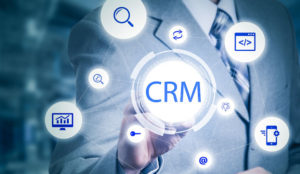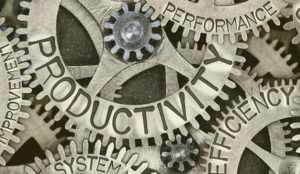
The upheaval in the Middle East is roiling the energy markets, and that will affect CRM. Year-over-year, the price of a gallon of regular is up over half a buck nationally, and the average price for said gallon is US$3.18. As gas goes, so does jet fuel. The confluence of rising prices, political unrest and a recovering economy all contribute to the price rise.
The important point for business is that it takes energy to do business, and as the cost of energy for vital things like transportation rises, it has a dampening effect on business and the nascent recovery.
Frequent readers of this space may recall a favorite statistic — that during the year that saw the last energy spike, Americans drove a combined 122 billion fewer miles than the year before. That almost never happens. To see a comparable event, you need to go back three or more decades to the oil embargoes.
The 30-Year Itch
Three decades is a time span we are hearing a lot about these days, as the news outlets report that dictators who are now falling, or in danger of falling, from power have been on the job for similar time spans. Mubarak in Egypt: 29 years. Zine el-Abidine Ben Ali in Tunisia: 24 years. Khadafy in Libya has been the colonel-issimo for over four decades. New names and time spans are added frequently.
Change rarely happens smoothly in our world. Precipitating events are dramatic, and they seem to change the world overnight. That’s important because the turmoil in the Middle East has the potential to be one such precipitating event. There are over 300 million people in the Middle East and North Africa, and there are another 240 million in sub-Saharan North Africa (both according to Pew Research). By comparison, there are a bit over 300 million Americans.
What’s the connection? The middle-class lifestyle, complete with cars, houses and washing machines — Americans have it and, make no mistake, others want it. Having the lifestyle is not a zero-sum game; if you want it you can attain it, just overthrow your local dictator and build an economy that supports middle-class jobs.
But there’s a rub. The middle class economy requires energy, and the revolution on the southern rim of the Mediterranean has the potential to dump hundreds of millions of middle-class aspirants into the world economy at once. Adding that demand to the world’s energy markets will, in a supply and demand scenario, cause another price spike.
Getting Thick Around the Middle
Get used to it.
According to the Brookings Institution, the planet will add 1.8 billion people to the roles of the middle class by 2020. Brookings says that world middle-class population will rise from a base of 30 percent in 2008 to 52 percent by then. By comparison, also according to Brookings, total global population will only rise by 1 billion people in that time.
What’s this have to do with CRM? Plenty.
Since the last oil price spike we’ve seen, many new technologies have risen that we will need to become familiar with to cope with rising transportation costs. Applications like unified communications servers, more powerful mobile devices and networks, even 3D displays will all play a role in helping us maintain contact while reducing our need to jump on a jet or motor on down the highway. And solutions and tools that have nothing to do with CRM — I am thinking about in-house developed video — will also play an important role in keeping your revenue motor running.
To all of this we must add increasingly necessary and powerful analytics. We need analytics to help us understand customers everywhere, but especially in emerging markets and in cultures different from ours. In a recent interview, Diane Hessan, CEO of Communispace put it to me this way, ” … you don’t even understand consumers in Massachusetts, and you live here. You certainly don’t understand consumers in Kansas City. So, now, let me ask you about consumers in China. At that point you’re banging your head against the wall, you’re clueless.” She was right, we need to understand — to diagnose before we prescribe.
The Role of Social
It would be a mistake to think that social media will do all the heavy lifting here. Good as it is at broadcasting a message, it is a dual-edged sword. In these emerging markets, credibility is all-important, and you don’t want to learn by throwing things against the wall to see what sticks, so analytics paired with social will be (already is) mandatory.
But closer to Massachusetts and Kansas City, analytics will be important, but so will the other technologies mentioned above. There’s no doubt that we need to begin thinking about and implementing solutions that keep us in front of customers and off the road simultaneously.
In another recent interview, Anneke Seley, coauthor of Sales 2.0, told me that organizations are just beginning to embrace the idea of hybrid sales models that leverage more inside selling coupled with traditional field selling and even marketing.
If you’d told me a year ago that a revolt in North Africa would get us all thinking about the future of CRM, I might have understood, but more likely I would have said those incidents were too disparate. But they aren’t. They are the precipitating events of the next big things in our world.

























































